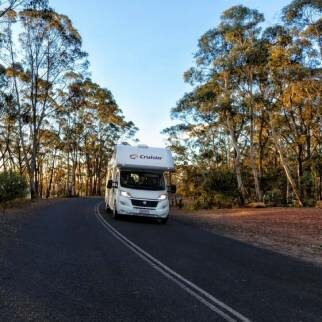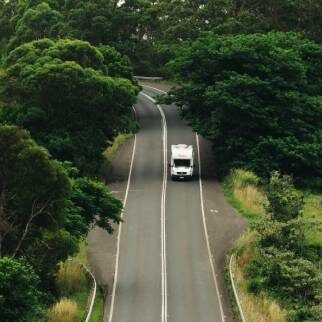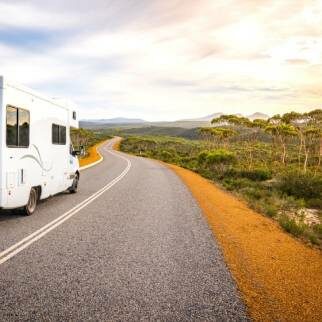Did you know that Australia is one of the most important nations on Earth for its biodiversity. It is home to more species than any other developed country.
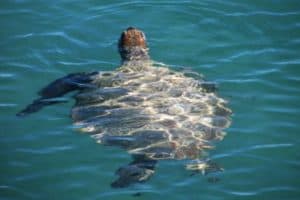 One of the best things about exploring this vast country is the close encounters that you’ll have with amazing animals that you won’t get to see anywhere else in the world! Australia has such a unique biodiversity, that 94% of frogs, 93% of reptiles, 87% of mammal species and 45% of bird species can only being found here! You’ll want to have your camera at the ready on your travels!
One of the best things about exploring this vast country is the close encounters that you’ll have with amazing animals that you won’t get to see anywhere else in the world! Australia has such a unique biodiversity, that 94% of frogs, 93% of reptiles, 87% of mammal species and 45% of bird species can only being found here! You’ll want to have your camera at the ready on your travels!
Often when we travel around the country on our Escorted Motorhome Tours, we are always delighted to see native wildlife, especially if they’re rare or endangered creatures. On a recent visit to New England National Park in NSW, we were super-excited to catch a glimpse of Australia’s largest carnivorous marsupial – the spotted-tail quoll, which is about the size of a domestic cat and is the rarest and most endangered of the four species of quolls.
Everyone who visits Australia looks forward to seeing kangaroos, koalas and emus…but we do get quite a few nervous questions about Down Under’s less cuddly creatures – the creepy crawlies, snakes and crocs, for example. It’s no secret that Australia has its fair share of critters that demand a bit of respect…but believe us, there is absolutely nothing to fear and once you start to understand them, you may even surprise yourself by becoming a bit of a fan!
Here’s a few pointers and a bit of insight to help you happily rub shoulders with both Australia’s favourite and most ‘misunderstood’ wildlife.
Tip #1 Treat wildlife with respect
To have the best interactions and get the best photos – be mindful to stay at a safe distance, don’t feed native animals or birds, read and obey signage and be mindful of what might live under the piece of wood you’re picking up to add to the firewood pile! At the end of the day, they are just going about their daily business and are keen to avoid human interaction most of the time so give them space, observe and enjoy!
Tip #2 Read the signs!
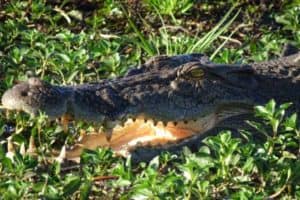 If you see a sign warning you of crocodiles – believe it because you can’t always see them! If you are touring the top third of Australia you’ll come across two different types of croc’s – the freshwater (freshies) and saltwater (salties) crocodiles. Apart from the size (saltwater crocodiles are larger), the most easily noticeable difference between the species is the shape of the head and teeth. Freshwater crocodiles have longer and thinner snouts with a straight jawline and all their teeth are nearly equal in size. Conversely, salties have a broad, powerful looking snout with an uneven jawline. Their teeth vary in size with some almost twice the size of others….but don’t get close enough to check that fact!
If you see a sign warning you of crocodiles – believe it because you can’t always see them! If you are touring the top third of Australia you’ll come across two different types of croc’s – the freshwater (freshies) and saltwater (salties) crocodiles. Apart from the size (saltwater crocodiles are larger), the most easily noticeable difference between the species is the shape of the head and teeth. Freshwater crocodiles have longer and thinner snouts with a straight jawline and all their teeth are nearly equal in size. Conversely, salties have a broad, powerful looking snout with an uneven jawline. Their teeth vary in size with some almost twice the size of others….but don’t get close enough to check that fact!
Tip #3 Sharing the space
Often when in a camping area, you’ll often see kangaroos, wallabies and even kookaburras nearby, Always fun to see and can be quite exciting! It is very important that no matter how cute or close these animals get to you, that you never feed them. Not only is human food bad for their health, it can also make them reliant on being fed and they can become aggressive. It is important never to leave food or rubbish scraps outside your camper too, if you are heading off for a walk. We’ve seen other campers end up with quite a messy site after the possums or scrub turkeys investigate.
Tip #4 Snakes and spiders
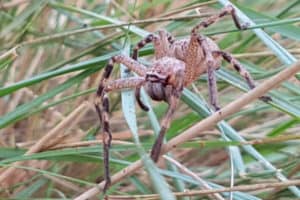 There are about 2,500 snake species in the world with only 110 living in Australia on land and 32 at sea. Now, why is everyone talking about the dangers of snakes in Australia? Well, Australia is the only country, or region, that has more venomous snakes than non-venomous species. But not all of the snakes considered poisonous have venom that is capable of killing humans, or even cause severe illness. If you do happen to come across a snake, the best thing to do is just to stay still or walk away slowly. Snakes have very poor eyesight and they’re completely deaf.
There are about 2,500 snake species in the world with only 110 living in Australia on land and 32 at sea. Now, why is everyone talking about the dangers of snakes in Australia? Well, Australia is the only country, or region, that has more venomous snakes than non-venomous species. But not all of the snakes considered poisonous have venom that is capable of killing humans, or even cause severe illness. If you do happen to come across a snake, the best thing to do is just to stay still or walk away slowly. Snakes have very poor eyesight and they’re completely deaf.
Australia has over 2,400 species of spiders and it is well known that Australia has some highly venomous ones! It is worth knowing that death from a spider bite is very rare. Recently (in 2016) someone died from a spider bite, but to put that into perspective, that’s the first one in over 40 years! The most common of spiders you’ll find in and around the home are the Huntsman spiders. They chase flies and other insects and they are one of the state’s largest spiders – the giant huntsman having a leg span of up to 12 inches (30cm). They can certainly give you a bit of a fright if you see one that large! Other common spiders are the Orb, these are widespread in warmer regions throughout the world, with species in Australia, Asia, Africa and the Americas.
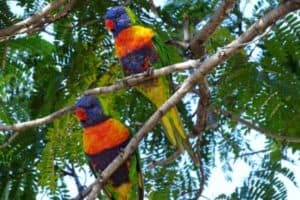 At the end of the day, you can explore a great deal of Australia without having to worry about the wildlife in this country. If you remain vigilant, take care when travelling at dawn or dusk, which is when most wildlife is on the move, you should be able to travel side by side with these amazing creatures and go home to tell the tale of your exciting adventure!
At the end of the day, you can explore a great deal of Australia without having to worry about the wildlife in this country. If you remain vigilant, take care when travelling at dawn or dusk, which is when most wildlife is on the move, you should be able to travel side by side with these amazing creatures and go home to tell the tale of your exciting adventure!
If you are planning on a motorhome holiday to Australia, don’t forget to get in touch as we can help you plan your trip and make sure you are equipped with the best motorhome to suit your needs.
-
Tags: Campervan Hire


